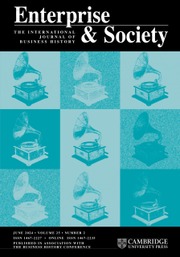The publisher regrets that in the original publication of this article, part of the abstract was captured as the article main text. The abstract should in fact be:
“Using Alabama as a case study of the beauty industry, this paper will demonstrate how licensing laws and regulations affected barbers and beauticians as they struggled to gain more clientele than their competitors. In the early twentieth century, white men dominated the market for cutting hair. Though the process started mid-century, by 1980, that relationship was inverted as women found themselves far outnumbering men. This research helps explain the gendered inversion of labor market trends while providing more general insights into the role of licensing laws in labor markets. Importantly, this work explores how race shaped labor market regulations, which affected and continue to affect labor markets and individual businesses in important ways.
“The goal of this paper is to explain the multivariate causes of this important labor market reversal using an analysis of race, gender, and political economy. It will argue that the advocacy for restrictive licensing laws and regulations, the failure to innovate and adapt to new styles in hair, and the racial and gendered makeup of the Barbers, Beauticians, and Allied Industries (BBAI) led to the ultimate failure of the union and the overall decrease in barbers during the latter half of the twentieth century. On the other hand, the degree to which black women were represented on licensing boards and played a role in the unique structure of cosmetology groups and unions led and contributed to the proliferation of cosmetologists during the same period.”
The article has been updated to reflect this, and this erratum published.

